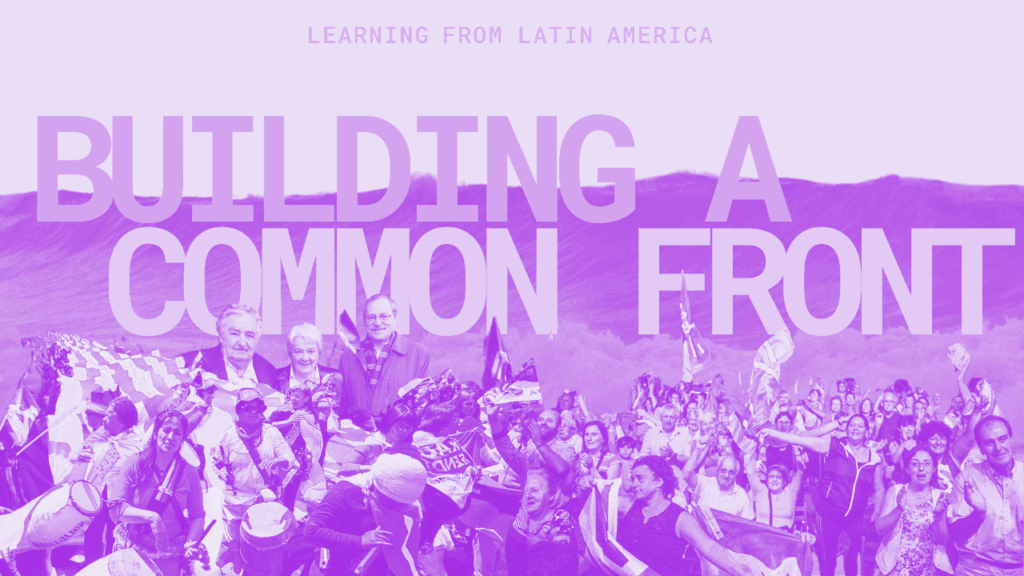In “La Rabia es Nuestra”, or “The Anger is Ours” in a free translation, Oriol Eurasquin agitates around a shared ambition with the All In project: we need to dismantle capitalism in the short-term before it destroys us. Even though my intention is not quite to write a full review of the book I must say it was really exciting to read another book whose ambition for victory – and victory only – is so clear, in a context where in Europe many organizations and militants are resorting to conformism, defeatism or just hiding way from the task.

If All In invites militants to anchor themselves emotionally in what the climate crisis means for the anti-capitalist struggle, La Rabia es Nuestra agitates and proposes anger as the key emotion for the left to dispute in order to be able to build a mass movement that is able to overthrow capitalism in the short-term. Strategically it argues for the need to dispute with the right-wing the anger felt by the working class in order to build a diverse and sustained mass-movement for rupture. This contrasts with the approach of the parliamentary left politics where anger is said to be an emotion that needs to be controlled or sanitized, something that “the fascists” are preaching, something the left must reject. In this way, the parliamentary left with no prospect of changing the system ends up aligning with the defense of the system by “playing by the rules” and trying to sanitize anger or painting it as something “barbaric” or “primitive”:
The right, therefore, would be a force that sows social division, distrust towards institutions, and hatred instilled from above. The response against them is good politics, a “pragmatic” attitude that they trust will restore hope to a disillusioned electorate.
Thus, the proposal is to cultivate and use anger in our favor, strategically as well as tactically when choosing our targets, by building clear class enemies and direct anger towards them (instead of abstractions like “the system”). Here, building intentional common strategies towards rupture and not just in the logic of “solidarity” or “alliances” is often times mentioned as a way forward. All In’s movement-as-party as well as the grand strategies and movement capabilities frameworks can be quite useful in developing, in a more concrete way, how to build this.
One of the interesting interactions with All In is in the building of the narrative capability of the ruptural movement. As it’s been said a million times, the right-wing has a lot more narrative capability currently than the left. Social media, owned by tech billionaires, has become more and more openly the territory of the far-right. So, how do we take back the narrative? How do we build communicative power that can express our ideas, agitate, mobilize, and ultimately become hegemonic?
There’s no doubt we need narrative and communication-focused elements in the broader ruptural movement ecology landscape. This poses a strategical question: how should we interact with social media? It’s very clear, as it’s stated in Oriol’s book, that both the bourgeois press and commercial social media are our enemies (social media as “malls with private security where left discourse is not welcomed”). As much as social media undoubtedly a tool of the enemy, perhaps we do need to know how to use it as much as we can. After all, as it’s argued in the book, mainstream social media like Instagram, Tiktok and X are not some alternative reality that we should ignore, as it gives meaning to ongoing events and it shapes real life politics. Whoever is the first one to grab the occurrence and give meaning to it by posting the viral post is the one who dominates the narrative – content made “in reaction” is just never as powerful (moreover, tactically speaking, it’s a terrible idea to make content in response to far-right content).
One of the key principles proposed by La Rabia es Nuestra for taking control over the narrative of ongoing events is “organizing attention”. A good practical example of this is Pantube, a Spanish collective founded a couple of years ago made of left-wing “influencers” (some of them have organizations behind them, others don’t, being just content creators with podcasts or social media channels, or even journalists from the progressive press). Pantube is based on the premise that not only is right-wing content dominating the current online scene, but that left-wing narratives are scattered and competing for attention. Thus, it has organized a sort of “content-creation cooperative” (a sort of gremio) where content is created collectively, in a coordinated way, and in tune with grassroots social movement agendas. This type of element – intentionally coordinated movement narratives to be diffused en masse by a dedicated yet diverse and coordinated body – is, I believe, a useful movement intervention to be explored in order to possibly drastically increase narrative capability. However, I do think that if we invest on commercial social media as our only terrain, we’ll eventually reach a roof. We need to be thinking in this communications-element as versatile in its terrains (across different platforms, not excluding commercial social media nor depending on it), while at the same time dedicating energy to understand what kinds of different communications infrastructure we can build that are reliable for the movement in the medium and long run. In this sense, the coordinated exit of “X” and (the less successful) migration towards Bluesky last year was a good example. All of this, of course, only makes sense if it is integrated in a broader ruptural movement ecology that, through international coordination, shares a common plan in order to be able to feed something bigger than itself. Or, in other words, it needs to be inserted in the movement-as-party framework.
“La Rabia es Nuestra” shares the same ambition as All In – changing the system through confrontation with the State in the deadlines of the climate emergency. It’s a clear callout to action – strategic, coordinated action.
Going “all in” means building coordinated movement-level plans to dare to seize the anger around us and direct it towards victory.
“Let’s organize the anger, because it is ours”.
***
Matilde Alvim is a climate justice activist based in Lisbon. She was co-founder and organizer of the Fridays for Future strikes in Portugal in 2019, as well as organizer of the “End Fossil: Occupy!” movement between 2022 and early 2024 at both national and international level. For the past year, she has been more active in Climáximo. In her free time, she is an anthropologist.
N.B. These “interaction” articles are book readings with specific angles. We have no intention of summarizing or reviewing the books. Rather, we are exploring interactions between the books’ content (main arguments or minor observations) and the movement-level strategy and organization framework presented in All In.







